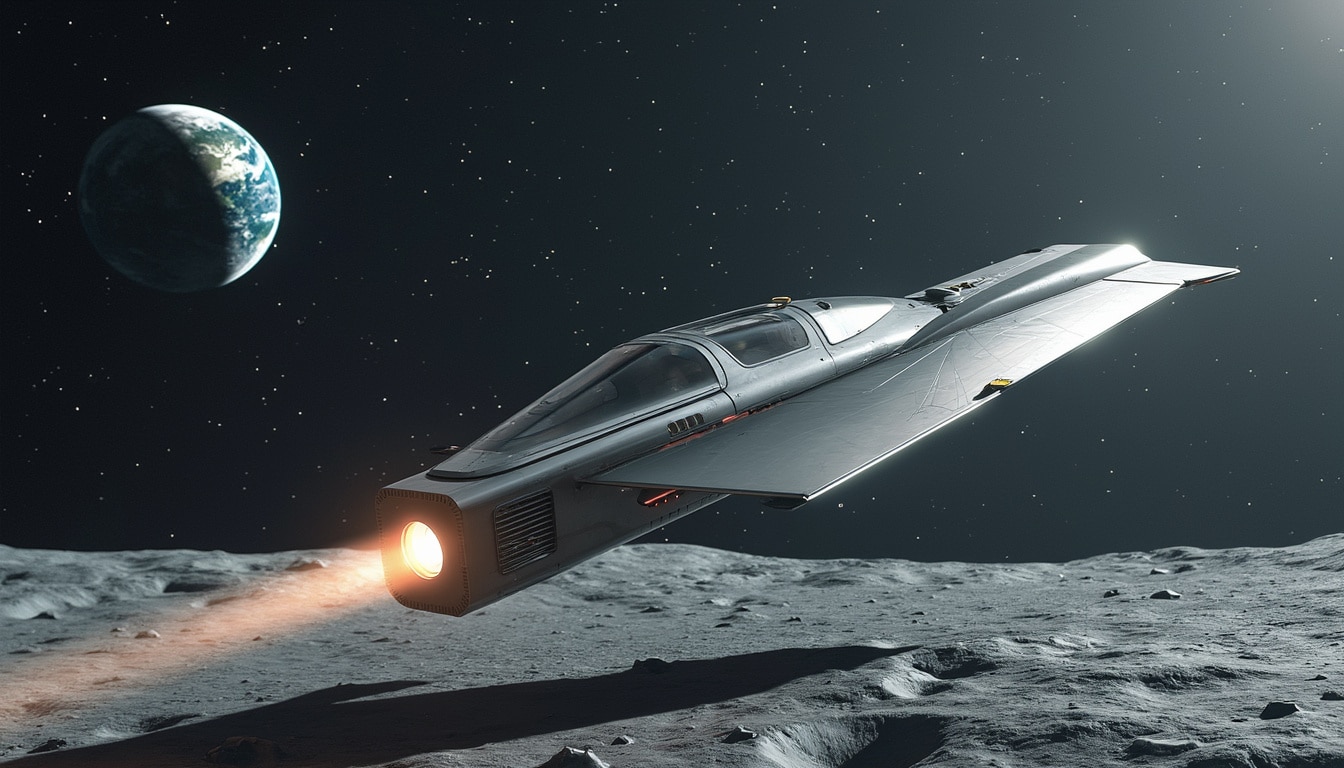The quest for lunar knowledge faces an uncertain phase as NASA continues its efforts to communicate with the Lunar Trailblazer spacecraft. Initially launched on February 26, 2023, this ambitious mission aims to explore and map water ice on the moon’s surface. However, shortly after its launch, contact with the small spacecraft was lost. Now, as the agency looks to mid-June for a potential recovery, hopes linger that the Lunar Trailblazer can still fulfill its essential scientific objectives.
Despite the significant challenges faced, including a possible malfunction that left the spacecraft in a low-power state, NASA is meticulously analyzing the situation to determine if contact can be re-established. The next few weeks hold critical potential, with changing sunlight conditions that may lead to a revival of communication. The Lunar Trailblazer mission is part of an innovative series of low-cost yet high-risk planetary science endeavors, showcasing NASA’s commitment to exploring our nearest celestial neighbor.
Understanding the Lunar Trailblazer Mission
The Lunar Trailblazer mission is of paramount importance to lunar science. It is a mission designed to conduct a comprehensive assessment of water and ice on the moon, which is a crucial resource for future explorations as well as scientific endeavors. The spacecraft was developed by Lockheed Martin and was intended to settle into an orbit around the moon and deploy various instruments for data collection.

The Objectives of Lunar Trailblazer
The core objective of Lunar Trailblazer is to identify and map water-ice deposits across the lunar surface. Understanding the presence of water, particularly in permanently shadowed craters, is vital for future manned missions. The discovery of water not only informs scientists about the lunar history but may also be a game-changer for sustainable lunar habitats. By determining the ice’s chemical composition, NASA aims to ascertain how accessible this precious resource is for potential use in space missions.
Partnerships and Technology
Lockheed Martin plays a significant role in this mission, highlighting the partnerships necessary for success in advanced space exploration. The spacecraft is equipped with sophisticated instrumentation, including imaging spectrometers designed to analyze the moon’s surface and detect ice signatures. This technology is essential for providing precise and timely data back to Earth, which is necessary for understanding the lunar environment.
The integration of multiple technologies from partners such as Northrop Grumman, Sierra Nevada Corporation, and SpaceX signifies a collaborative approach to planetary exploration. Each player contributes expertise that enhances mission capabilities, including the transportation and deployment strategies that propel ambitious projects like Lunar Trailblazer.
Current Status and Recovery Efforts
Since losing contact mere hours after launch, NASA has been diligently working to restore communications with the Lunar Trailblazer. The agency’s hope hinges on the potential for the spacecraft to generate sufficient power and establish radio contact. An initial statement from NASA indicated that conditions might improve in May and early June, allowing daylight to reach the spacecraft’s solar panels and recharge its batteries.
The Science Behind the Recovery
The recovery process is a complex orchestration of science and technology. Ground-based observations have enabled NASA experts to track the craft’s position and model its spin and orientation. Louise Prockter, director of NASA’s planetary science division, indicated that observations suggest inadequate sunlight was reaching the spacecraft’s solar panels, hindering power generation.
With changing cosmic conditions, the hope is that the orientation of the Lunar Trailblazer will allow more sunlight exposure. NASA continues to monitor the situation with a global antenna network, aiming to pick up any signal from the craft that could facilitate commands and potentially allow for the continuation of its mission.
The Importance of Contact Restoration
Successfully re-establishing contact is not merely a task of restoring communications; it is about revitalizing a mission that holds the potential for groundbreaking discoveries in lunar science. If contact is achieved, NASA will conduct a review to assess the feasibility of continuing science operations or possibly pivoting to alternative mission profiles. Should efforts fail by mid-June, the agency will consider closing the mission and drawing critical lessons for future endeavors.

Future Implications for Lunar Exploration
The challenges faced by the Lunar Trailblazer highlight the inherent risks associated with space exploration. Even as the mission grapples with uncertainties, its outcomes may yield essential knowledge regarding lunar science and the technological refinements necessary for future missions. This mission is intricately tied to upcoming lunar endeavors, underscoring the interconnected nature of celestial exploration.
Broader Context of Lunar Exploration
The exploration of the moon is crucial for both scientific research and the future of space travel. As NASA prepares for the Artemis program, which aims to return humans to the moon by 2025, understanding how to utilize resources such as lunar water is pivotal. Future astronauts require sustainable sources of water and energy to survive extended missions on the moon.
With partners like SpaceX and Boeing contributing their technology and expertise, NASA aims to establish a sustainable human presence on the moon. This ambitious scope requires an understanding of lunar resources, making the information that Lunar Trailblazer may provide especially valuable.
Technological Innovations and Lessons Learned
Regardless of whether contact is restored, the experience gleaned from the Lunar Trailblazer mission will significantly enhance future lunar explorations. By establishing an independent review board, NASA aims to utilize insights gained from the recovery challenges to inform subsequent missions. The lessons learned will directly influence mission planning, risk assessment, and execution strategies for upcoming lunar and planetary ventures.
The Community and Scientific Engagement
Lunar exploration transcends the boundaries of scientific communities; it engages the public’s imagination and thirst for discovery. NASA has been proactive in sharing updates and rallying support for missions like the Lunar Trailblazer. The mission encapsulates the collective curiosity of humanity toward our cosmic neighborhood. Through partnerships with educational institutions and engaging the broader community, NASA fosters interest and support for space exploration.
Public Interest in Space Missions
The public’s intrigue with lunar missions often parallels astronomical events, revealing a deep-rooted interest in exploring the unknown. Engaging storytelling about missions like Lunar Trailblazer resonates widely, stimulating discussions in forums, classrooms, and online platforms. For instance, initiatives that leverage social media engagement through platforms like Twitter can amplify excitement and awareness around space missions.
Collaboration with Educational Institutions
Educational institutions play a pivotal role in shaping future innovators and explorers. Collaborations between NASA and schools help cultivate interest in STEM fields. As the Lunar Trailblazer initiative continues, partnerships with universities provide hands-on experiences for students and opportunities for research that intertwines educational pursuits with practical space exploration challenges. In this way, future generations are inspired to contribute to scientific advancements and the exploration of the solar system.

| Mission | Launch Date | Status | Objectives |
|---|---|---|---|
| Lunar Trailblazer | February 26, 2023 | Contact Lost | Map lunar water ice concentrations |
| Artemis I | November 16, 2021 | Completed | Test systems for lunar missions |
| ESCAPADE | Delayed | Planning | Explore Martian moons |
| Janus | Canceled | N/A | Asteroid flyby missions |
The journey of the Lunar Trailblazer embodies the spirit of exploration that defines humanity’s quest for understanding. As NASA diligently attempts to restore contact and reevaluate the possibilities, investments in science, technology, and education pave the way for groundbreaking discoveries. The intertwined relationships between agencies and partners exemplify how collaboration elevates our ventures into space.




Leave a Reply